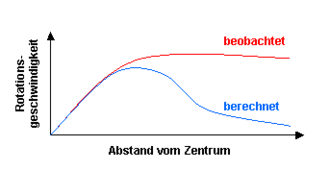Guten Morgen zusammen!
Aus dem bereits in Beitrag #2 verlinkten Thread
http://www.scienceforums.net/topic/5...ited-to-voids/:
Zitat:
|
Zitat von Iggy
Zitat:
|
Zitat von imatfaal
Zitat:
|
Zitat von Iggy
Besides disregarding the cosmological constant, it is model independent.
A somewhat comprehensive description can be found on Ned Wright's Cosmology Tutorial - Part 2 with the paragraph that begins "We can compute the dynamics of the Universe".
If you want to know if an area of space will eventually collapse or continue to expand indefinitely, mark the area as a sphere. Measure the radius of the sphere -- r, and the velocity of the edge of the sphere compared to the center -- v, and solve:

That will be the critical density. If it is greater than the measured average density of the sphere (mass / volume) then it will continue to expand. |
I like that Iggy - but surely that only works when you can assume isotropy and homogeneity. Of course on a small scale this is not a valid assumption and one cannot use shell theorem and others to simplify matters.
The large sphere that fits between andromeda and the milky way may well have a calculated critical density far greater than the measured mass/volume - but it ain't gonna expand because of the milky way and andromeda |
I agree. That is a good counterexample. |
(Hervorhebungen von mir)
Zitat:
|
Zitat von wikipedia
Nach dem Dritten Keplerschen Gesetz und den Gravitationsgesetzen müsste die Rotationsgeschwindigkeit der äußeren Bereiche von Galaxien abnehmen. Sie bleibt jedoch konstant oder steigt sogar an, siehe Rotationskurve.
 |
In singulärer Betrachtung einer "Galaxien-Sphäre" scheinen diese beobachteten Rotationsgeschwindigkeiten tatsächlich mysteriös.
Beachtet man allerdings obige Argumentation von imatfaal und kehrt sie bei ihrer Anwendung auf den hier vorliegenden Sachverhalt lediglich in ihrer Logik um (Die betreffenden Galaxien sind von "Leerer-Raum-Sphären" umgeben, deren Energiedichte unter dem kritischen Wert liegt, folglich expandieren und dadurch "Druck" auf die in ihrem Zentrum liegenden Galaxien ausüben) - Dann könnte sich die dunkle Materie ja eventuell als überflüssig erweisen ...
